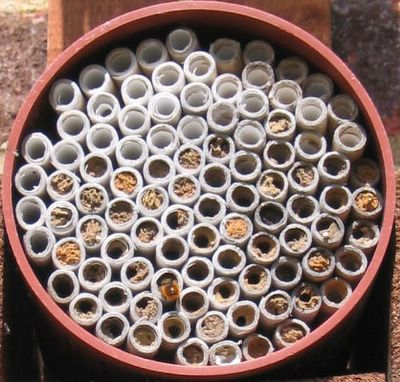Solitary bees do it in numbers
The Oxford Bee Company is building its business on the pollination abilities of Osmia rufus (red mason bee). It is also producing these nests for gardens. I've had no joy, but a neighbour a few doors up is having lots of success. This is just the second year that the nests have been in position.
The red mason bee lays up to six eggs in cells separated by mud in each straw of the nest. In late March (in the UK), they start to hatch. The first laid egg hatches and nibbles the bum of the one in front -- and so on until they all realise it's time to fly. This picture taken just an hour ago shows a female returning to lay an egg or to seal one with mud and pollen for next year's pollinator.
Rufus can be very important as an early pollinator.


The red mason bee lays up to six eggs in cells separated by mud in each straw of the nest. In late March (in the UK), they start to hatch. The first laid egg hatches and nibbles the bum of the one in front -- and so on until they all realise it's time to fly. This picture taken just an hour ago shows a female returning to lay an egg or to seal one with mud and pollen for next year's pollinator.
Rufus can be very important as an early pollinator.



0 Comments:
Post a Comment
<< Home